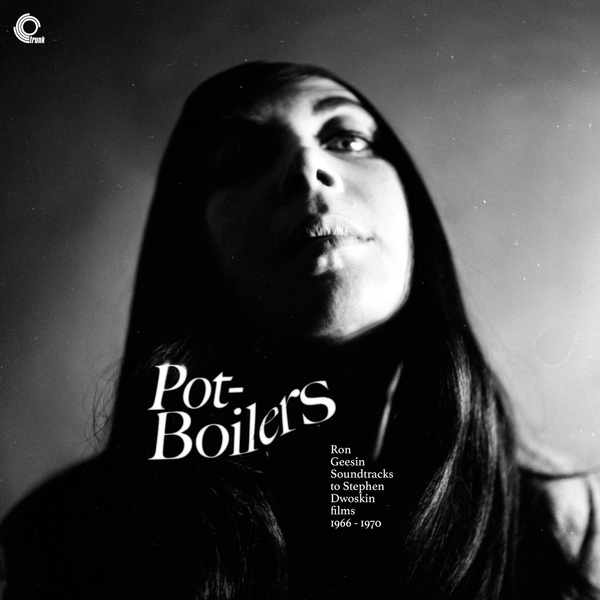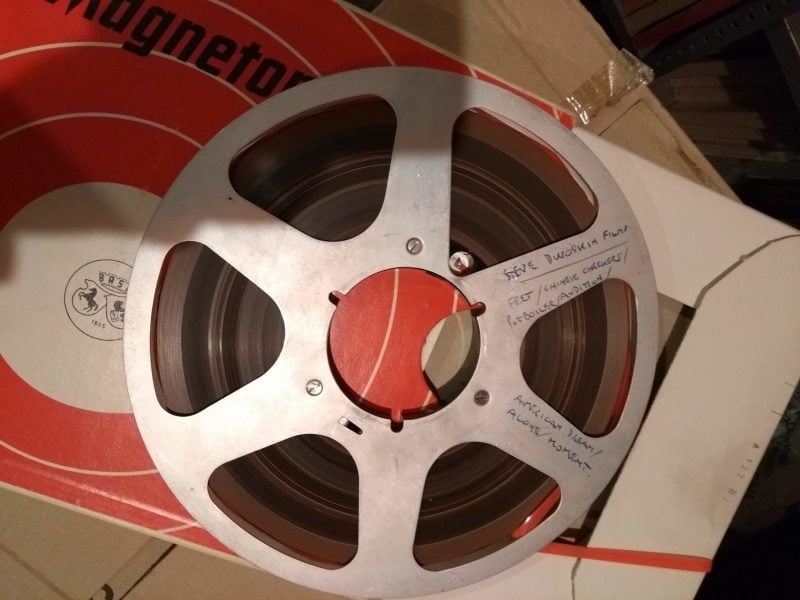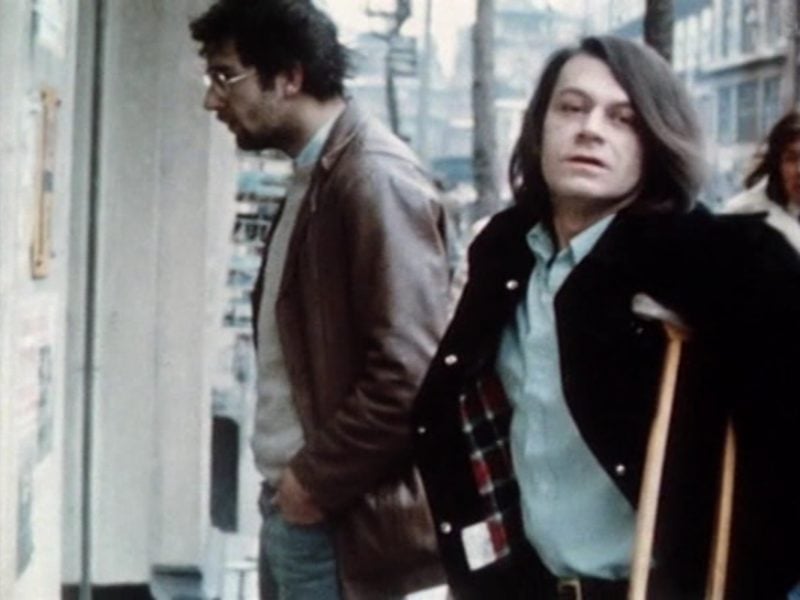At the end of last month’s episode we left Steve Dwoskin and Ron Geesin in the autumn of 1966, when at least two of Dwoskin’s films with Geesin’s soundtracks – Alone and Chinese Checkers – were heard and seen in public for the first time, during the protracted birth of the London Film-Makers’ Co-op. (Both soundtracks are on Ron Geesin’s Pot-Boilers, available now from Trunk Records on Spotify and elsewhere.) The films had been shot in New York, and none of the films Dwoskin had shot in London to that date were to remain in the Dwoskin ‘canon’. What follows is the Notting Hill story of how the next two New York films were finished, completing the quartet that made Dwoskin’s international reputation. The next instalment will continue the story, telling of how Dwoskin came to make the first of his surviving London films.
In the mid-1960s Geesin was performing in a variety of contexts, synthesizing a variety of musical forms. In 1965–6 he was a member of Dr Crock and His Crackpots, a novelty act that had been going since the 1940s. In February 1966, during a week-long residency at Greasbrough Working Men’s Club, he had met a young musician, Gavin Bryars, who played double bass in the house band. The Crackpots at that time, recalls Bryars, were ‘kind of a comic band, loosely trad jazz, but rather anarchic’. In addition, Geesin ‘would have a solo spot where he’d play the banjo or piano, and sing as well’. In London, Geesin was a regular at Eel Pie Island and Osterley Jazz Club, and would play in a ‘casual combo’, he says, ‘made from the Temperance Seven’, another trad jazz act – also comic, though perhaps not as much as Dr Crock – at the George & Devonshire in Chiswick.
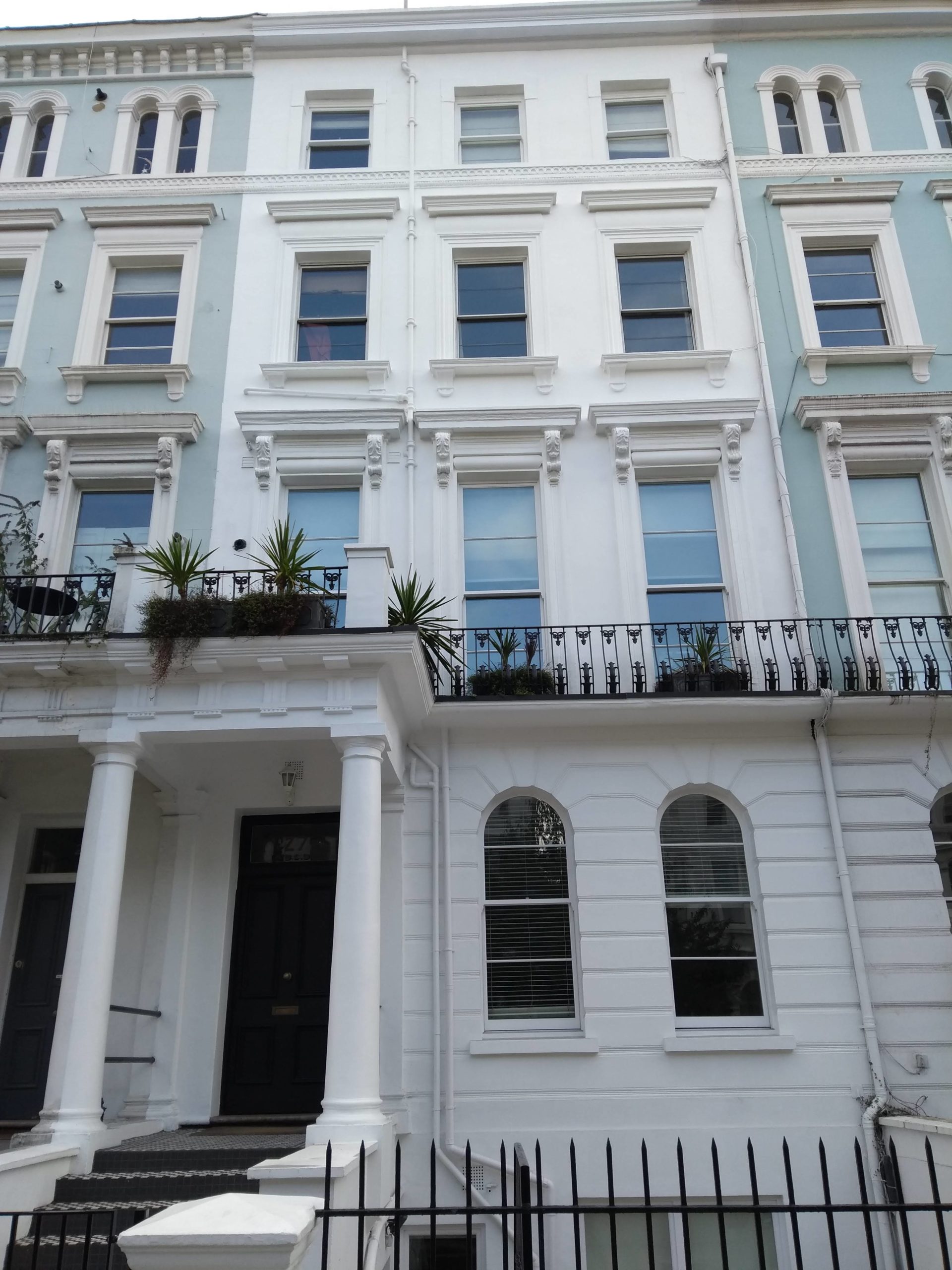
Dwoskin’s home in Elgin Crescent
Of the Dwoskin soundtracks collected on Pot-Boilers, this part of the Geesin repertoire is represented by Feet. The film it accompanied, latterly known as Asleep, is Dwoskin’s uncharacteristic debut – made in about 1961 and consisting entirely of shots of his wife’s feet, he described it as ‘me trying to learn how to use the camera’. The madcap accompaniment is oddly appropriate – or perhaps not so oddly. Raymond Durgnat, who is probably the only critic to have attempted an analysis of Asleep, found that Solo, one of Dwoskin’s lost films, ‘evoked the Temperance Seven/Biographic/Mukkinese Battle Horn vein of Edwardian spoof-nostalgia’, not reference points that one would ordinarily bring up in connection with Dwoskin, but adjacent to the world of Dr Crock and His Crackpots. (Durgnat’s synopsis is: ‘A youth polishes a huge horn among audio-visual incunabula.’)
Both Geesin and Bryars, while playing in commercial clubs for a living – Bryars would support touring acts like Dusty Springfield – were aficionados of experimental music, namely John Cage and those associated with him. (Possibly this lies behind the ultra-minimal soundtrack to Alone.) Typically engaged in Greasbrough seven nights week, on Saturday afternoons Bryars played in what had begun as a modern jazz group based in Sheffield, the Joseph Holbrooke Trio, with Derek Bailey and Tony Oxley – now legendary, then extremely obscure, though in early 1966 they toured with Lee Konitz. By then the trio was playing free improvisation, but it was also beginning to break up as its members dispersed around the country. Bryars, when in London, would sleep on the Geesins’ floor in Elgin Crescent.

The crunch for the JHT came about the time of the launch of the London Film Makers’ Co-op, in late 1966. One Saturday in November, Bryars has written, ‘we had played three different concerts in one day: our usual lunchtime session in Sheffield; the opening of an art exhibition in Northampton in the afternoon; and later that evening at The Little Theatre, St. Martins Lane, London. When I returned home I put my bass in its case and didn’t take it out for 17 years.’ At the end of the same month he and Geesin went to see John Cage give a lecture, as part of a Merce Cunningham residency at the Saville Theatre. Bryars told me:
it was billed as a lecture, everyone thought you were going to get some explanation. It started, and he was wearing a kind of RAF gas mask, he had mics and stuff, and after about 30 or 40 seconds the sound gradually distorted, everyone thought there was something wrong with the speakers, but it was basically a performance, and people were getting more and more irritated – it was terrific.
Some sense of it is given in a remarkable episode of Tempo, the ITV arts programme. Afterwards Bryars gave Cage a couple of his compositions for his ‘Notations’ project. The Cunningham residency, Bryars has written, ‘really opened my eyes. I decided that this kind of thing was what I wanted to spend the rest of my life doing’.
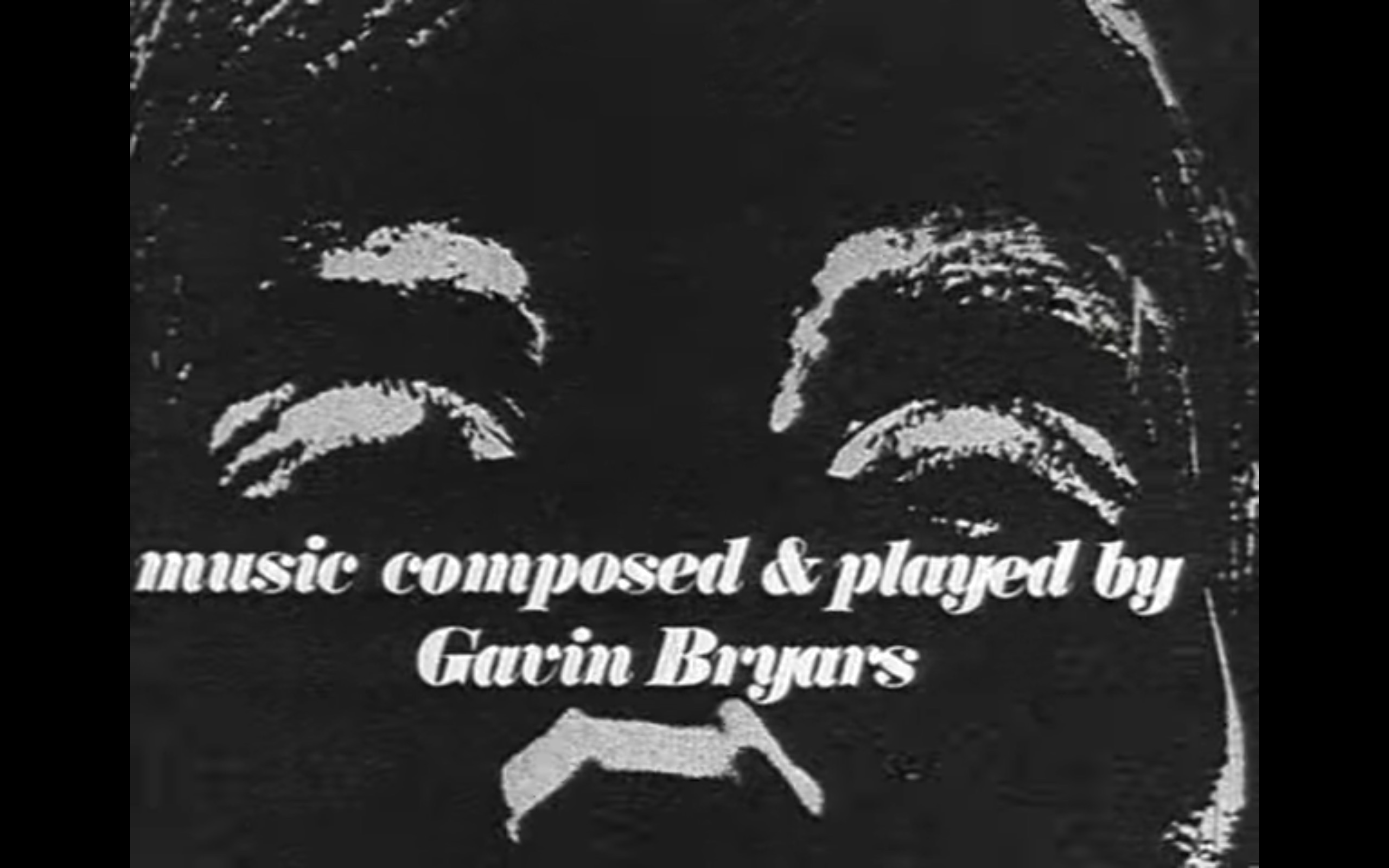
Dwoskin-designed credit from Naissant (1967)
All the while that autumn, Dwoskin’s completed films were being shown, most often – so far as can be told – at Better Books, and the others needed to be finished. There are very few recordings of Bryars performing from these years; one of them is the soundtrack to Dwoskin’s Naissant, recorded in the Geesins’ flat, most likely in January 1967. Whether this counts as taking the double bass out of its case remains ambiguous – by putting it away, Bryars meant to break with free improvisation. Having relistened to it, Bryars says ‘I’m pretty sure I may even have been improvising to the movie itself, and Ron was sort of directing me a little bit, and I was responding in different ways’. Bryars would go on to provide the scores for most of Dwoskin’s best-known films – but these, starting with Times For in 1970, belong to another epoch in Bryars’ career. In between, he spent part of 1968 in the US, for some of that time working for John Cage as an assistant, Cage having remembered him from London.
The fourth film of the quartet, Soliloquy, was also recorded some time in early 1967, also in the Geesins’ flat. The credits Dwoskin provided for the Knokke festival attribute the ‘script’ to Dwoskin and Leena Komppa, the ‘adaptation’ to Komppa, and the ‘music (sound)’ to Geesin; Komppa is credited with Joan Adler as a cast member, and it is her voice that we hear over Adler’s face. Leena Komppa was a photography student at the London College of Printing, and since February 1967 Dwoskin’s live-in girlfriend in Elgin Crescent. Dwoskin was fascinated by Ulysses, which is where the general idea comes from, but she was responsible for the script itself. The two ‘new’ films, Naissant and Soliloquy, seem to have been shown for the first time at the new Arts Lab on Drury Lane, just before the building’s full opening in September. But they were not his newest films; by then Dwoskin had shot his first acknowledged ‘English’ film, growing out of the Notting Hill nexus, Me Myself and I…
XX
The Dwoskin Project is based at the University of Reading and supported by the AHRC. Visit its website: https://research.reading.ac.uk/stephen-dwoskin/
Henry K. Miller is a postdoctoral research associate at the University of Reading, and editor of The Essential Raymond Durgnat.

